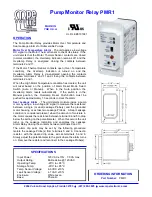
214
ifm
Programming Manual BasicController relay CR0431 v03.03.00
05 / 2018
Terms and abbreviations
>
DRAM
DRAM =
D
ynamic
R
andom
A
ccess
M
emory.
Technology for an electronic memory module with random access (Random Access Memory, RAM).
The memory element is a capacitor which is either charged or discharged. It becomes accessible via a
switching transistor and is either read or overwritten with new contents. The memory contents are
volatile: the stored information is lost in case of lacking operating voltage or too late restart.
>
DTC
DTC =
D
iagnostic
T
rouble
C
ode = error code
In the protocol J1939 faults and errors well be managed and reported via assigned numbers
– the
DTCs.
>
E
ECU
(1)
E
lectronic
C
ontrol
U
nit = control unit or microcontroller
(2)
E
ngine
C
ontrol
U
nit = control device of a engine
>
EDS-file
EDS =
E
lectronic
D
ata
S
heet, e.g. for:
• File for the object directory in the CANopen master,
• CANopen device descriptions.
Via EDS devices and programs can exchange their specifications and consider them in a simplified
way.
>
Embedded software
System software, basic program in the device, virtually the
→runtime system.
The firmware establishes the connection between the hardware of the device and the application
program. The firmware is provided by the manufacturer of the controller as a part of the system and
cannot be changed by the user.
>
EMC
EMC =
E
lectro
M
agnetic
C
ompatibility.
According to the EC directive (2004/108/EEC) concerning electromagnetic compatibility (in short EMC
directive) requirements are made for electrical and electronic apparatus, equipment, systems or
components to operate satisfactorily in the existing electromagnetic environment. The devices must
not interfere with their environment and must not be adversely influenced by external electromagnetic
interference.
>
EMCY
Abbreviation for emergency
Message in the CANopen protocol with which errors are signalled.
>
Ethernet
Ethernet is a widely used, manufacturer-independent technology which enables data transmission in
the network at a speed of 10...10 000 million bits per second (Mbps). Ethernet belongs to the family of
so-called "optimum data transmission" on a non exclusive transmission medium. The concept was
developed in 1972 and specified as IEEE 802.3 in 1985.
Summary of Contents for BasicController CR0431
Page 228: ...228 10 Notizen Notes Notes...















































